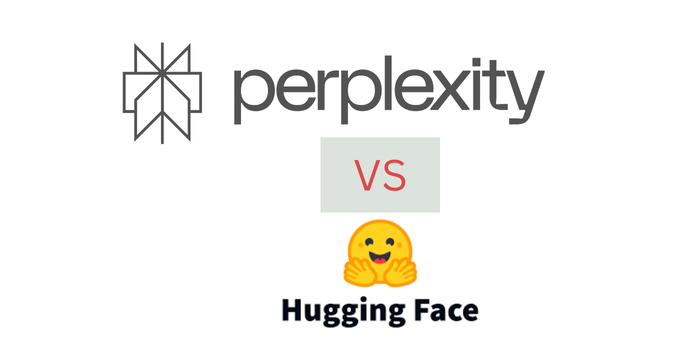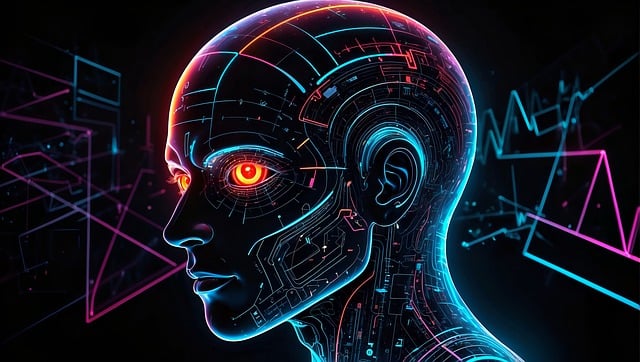In today’s rapidly evolving world of artificial intelligence (AI), platforms that help users interact with and develop large language models (LLMs) are in high demand. Among the most influential players in this space are Perplexity AI and Hugging Face. While both are advancing AI accessibility and capabilities, their goals, user bases, and technological offerings differ significantly.
In this comprehensive blog post, we will compare Perplexity AI and Hugging Face across several key dimensions, including their origin stories, core technologies, use cases, community impact, tools, APIs, and overall value proposition.
Introduction to AI Language Tools
Natural language processing (NLP) has become central to AI-powered solutions in fields like education, business analytics, healthcare, and more. Tools like Perplexity AI and Hugging Face serve different but complementary roles in making NLP more accessible and functional. Where Perplexity focuses on providing fast, factual, conversational answers, Hugging Face gives developers the infrastructure to build, train, and deploy their own AI models.
Overview of Perplexity AI
Perplexity AI is an AI-powered answer engine that combines the language generation abilities of large language models with live internet search. Think of it as a smarter, more accurate search engine that responds conversationally. Its Pro version gives access to multiple LLMs (GPT-4, Claude, Mistral) and supports document uploads, citations, and follow-up queries.
Key highlights:
- Emphasis on real-time, accurate answers
- Source citations to ensure reliability
- Streamlined UI for fast Q&A interactions
- Built-in access to top-tier LLMs
Overview of Hugging Face
Hugging Face is an open-source platform and company that provides tools, datasets, and model hosting for machine learning developers. It is best known for its Transformers library, which supports hundreds of pre-trained models for tasks like text generation, translation, summarization, and more.
Key highlights:
- Open-source ML tools and libraries
- Model hub with thousands of downloadable models
- Community-focused development
- Robust APIs and training tools
Core Philosophy and Mission
Perplexity AI is focused on improving how people find and consume information. It seeks to replace traditional search engines with something more intuitive, transparent, and efficient by integrating AI directly into the search experience.
Hugging Face is built around democratizing AI. Its mission is to make advanced ML accessible to everyone—developers, researchers, and businesses—by offering open-source resources and hosting a thriving community of contributors.
Technology Stack Comparison
Perplexity AI:
- Uses third-party large language models (GPT-4, Claude, Mistral)
- Integrates real-time search APIs
- Focused on retrieval-augmented generation (RAG)
- Optimized for performance and factuality
Hugging Face:
- Hosts open-source models like BERT, RoBERTa, DistilBERT, etc.
- Supports training on platforms like Amazon SageMaker and Google Colab
- Includes Datasets, Tokenizers, and Diffusers libraries
- Offers its own inference API and hosted inference endpoints
Key Features & Tools
Perplexity AI:
- Conversational interface with citations
- File and document upload for Q&A
- Pro version unlocks access to multiple LLMs
- Image understanding and math solving
Hugging Face:
- Transformers library for NLP tasks
- Model hub (100K+ models)
- AutoTrain: low-code/no-code model training
- Inference API and Spaces for app deployment
- Dataset hub and visualization tools
Community & Ecosystem
Hugging Face has one of the most active AI developer communities. Contributors from around the world add new models, improve documentation, and participate in discussions.
Perplexity has a growing user base but is not developer-focused. Its community is more aligned with end-users, students, journalists, and business professionals.
Winner: Hugging Face for community contributions and developer support.
Use Cases & Applications
Perplexity AI:
- Academic research and homework help
- Market research and competitive analysis
- Factual answers for everyday users
- Real-time news aggregation
Hugging Face:
- Fine-tuning LLMs for specific tasks
- Deploying NLP apps and chatbots
- Sentiment analysis, classification, translation
- AI model benchmarking and experimentation
Developer-Friendliness
Hugging Face was built by and for developers. Its extensive documentation, GitHub integration, open-source ethos, and collaborative tools make it the gold standard for AI development.
Perplexity, by contrast, is not developer-centric. It doesn’t allow for model customization or integration into custom pipelines.
Winner: Hugging Face
Real-Time Data & Search Capabilities
This is where Perplexity AI shines. Unlike Hugging Face, which relies on static trained models, Perplexity is built for real-time information. It fetches and cites up-to-date sources from the web, something very few AI tools can do effectively.
Winner: Perplexity AI
- Perplexity Pro vs ChatGPT Plus: A Comprehensive Comparison
- Perplexity AI vs. Google Search: Which Provides Better Answers?
Business Model & Pricing
Perplexity AI:
- Free version with basic functionality
- Pro version at $20/month
- Offers access to premium models and features
Hugging Face:
- Mostly free for open-source usage
- Paid tiers for advanced inference endpoints, AutoTrain, and business-scale deployments
- Custom pricing for enterprise-level access
Winner: Depends on use case. Hugging Face is better for developers. Perplexity is cost-effective for knowledge workers.
Privacy & Ethics
Hugging Face promotes transparency and open science. Many of their models and datasets come with warnings about bias, toxicity, and data provenance. They’re also leaders in ethical AI research.
Perplexity AI uses a privacy-first design and includes clear citations, which builds trust. However, since it uses third-party models, data handling depends on external providers too.
Winner: Hugging Face
Strengths and Weaknesses
Perplexity AI Strengths:
- Real-time information with sources
- Simple interface for non-technical users
- Access to multiple leading AI models
Perplexity AI Weaknesses:
- Limited developer tools or APIs
- No model customization or training
Hugging Face Strengths:
- Extensive tools for ML development
- Huge model and dataset repository
- Highly active and supportive community
Hugging Face Weaknesses:
- No real-time search integration
- Steeper learning curve for beginners
Which Should You Choose?
Choose Perplexity AI if you are:
- A researcher, journalist, student, or business analyst
- In need of real-time factual answers with citations
- Not interested in building your own models
Choose Hugging Face if you are:
- A developer, data scientist, or ML engineer
- Building custom NLP models or apps
- Looking for training infrastructure and APIs
Some advanced users might use both: Perplexity for day-to-day insights and Hugging Face for model experimentation.
Conclusion
Perplexity AI and Hugging Face serve two very different roles in the AI ecosystem. Perplexity is an outstanding tool for efficient, accurate, real-time information retrieval with a user-friendly interface. Hugging Face, on the other hand, is the backbone of the open-source NLP community and a haven for developers looking to innovate in the field of machine learning.
Choosing between them depends on whether you want to consume AI knowledge (Perplexity) or create and shape AI models (Hugging Face). Both are essential tools in the modern AI toolkit, and understanding their strengths can help you harness the power of AI more effectively.






